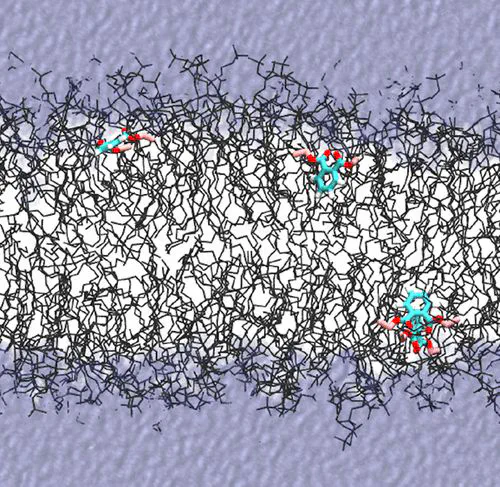Interaction of Phthalates with Lipid Bilayer Membranes
Jun 16, 2022·
 ,
,
·
1 min read
,
,
·
1 min read
Zobia Naz
Roshan Shrestha
Syed Tarique Moin
Luca Monticelli
 Image credit: Unsplash
Image credit: Unsplash
Abstract
Phthalates are esters of phthalic acid, widely used as additives in the manufacture of plastics. They are not covalently linked to polymer chains and can easily leach out, disperse in the environment, and get into contact with living organisms. Several short chain phthalates are classified as endocrine disruptors or hormonal active agents, and have also been reported to promote various kinds of cancer. However, the biological effects of longer chain analogues are less well known. Moreover, little is known on the permeation of phthalates and their metabolites through biological membranes and on their effects on the physical properties of membranes. Here we explore the interaction of a group of phthalates and their main metabolites with model biological membranes. We focus on three industrially relevant phthalates, with acyl chains of different sizes, and their monoester metabolites. We use molecular dynamics simulations to predict the distribution in model membranes, as well as permeabilities and effects on the structural, dynamic, and elastic properties of the membranes. We find that alterations of membrane properties are significant and only weakly affected by the size of acyl chains, suggesting that modifications of molecular size may not be sufficient to reduce the impact of this class of molecules on the environment and health.
Type
Publication
*The Journal of Physical Chemistry B
Click the Cite button above to demo the feature to enable visitors to import publication metadata into their reference management software.
Create your slides in Markdown - click the Slides button to check out the example.
Add the publication’s full text or supplementary notes here. You can use rich formatting such as including code, math, and images.